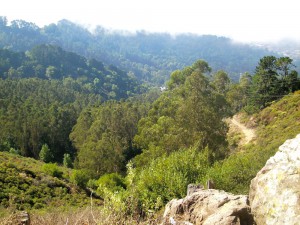Carol was telling me about her trip to the video rental store. They have a big fancy entertainment center with surround-sound speakers where they show videos, and when Carol went they were showing the fourth Star Wars movie. I admitted that I had never seen that one, and then I had to admit that the only Star Wars movie that I had ever seen in its entirety was the first movie. “But I saw the first Star Wars on opening day,” I said.
“Really,” said Carol, expressing mild interest.
“Haven’t I ever told you that story?” I said. “I went with my friend Mike. We were in the high school science fiction club together. The auditorium was filled with people from the New England Science Fiction Association. When — what’s his name, Harrison Ford’s character —”
“Han Solo,” said Carol.
“Yeah, when he’s talking about how fast his spaceship will go,” I said, “he says something like, ‘Yeah, it’s so fast it’ll go 32 parsecs.’ And all around us you could hear people murmuring, ‘Parsecs? Parsecs per what?’ And then people started booing.”
Carol laughed at the image of a movie theatre full of science fiction geeks booing.
“And when we came out of the movie, they offered us buttons that said, ‘May the Force be with you.’ And I didn’t take one. Mike and I were sure that the only people who would like the movie would be science fiction geeks.”
“That button would probably be valuable now,” Carol said.
“Yeah,” I said. “I figured it would be like George Lucas’s first movie, ‘THX-1138’ or whatever it was called. Good movie, but no one watched it.”
Carol said that when she learned about George Lucas’s connection with Joseph Campbell, she realized how powerful those Star Wars movies could be. I had no such intimation; I didn’t get that Star Wars was myth, religion even, wrapped up in pop culture. And because of that, today I do not own a valuable button reading “May the Force be with you.”

